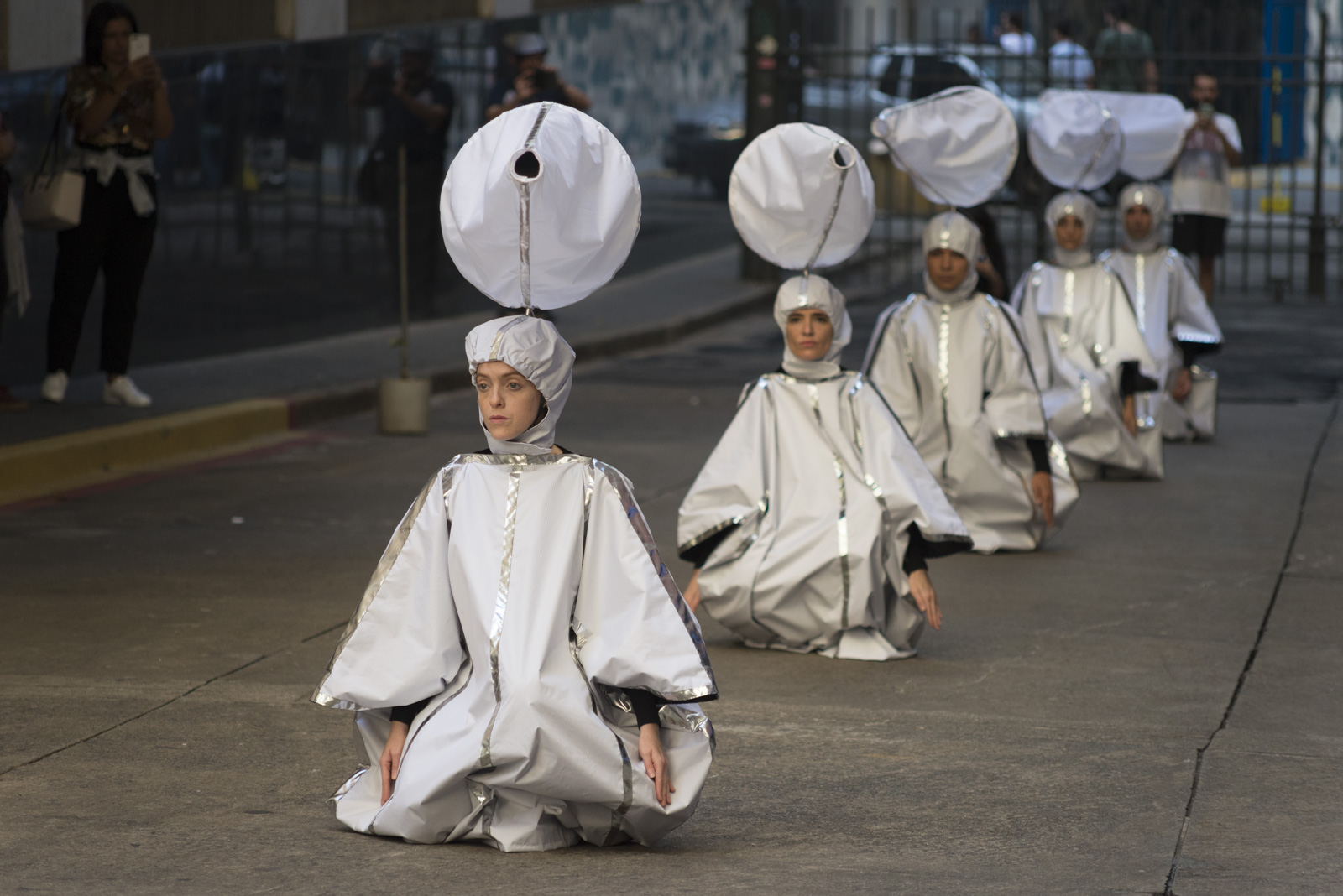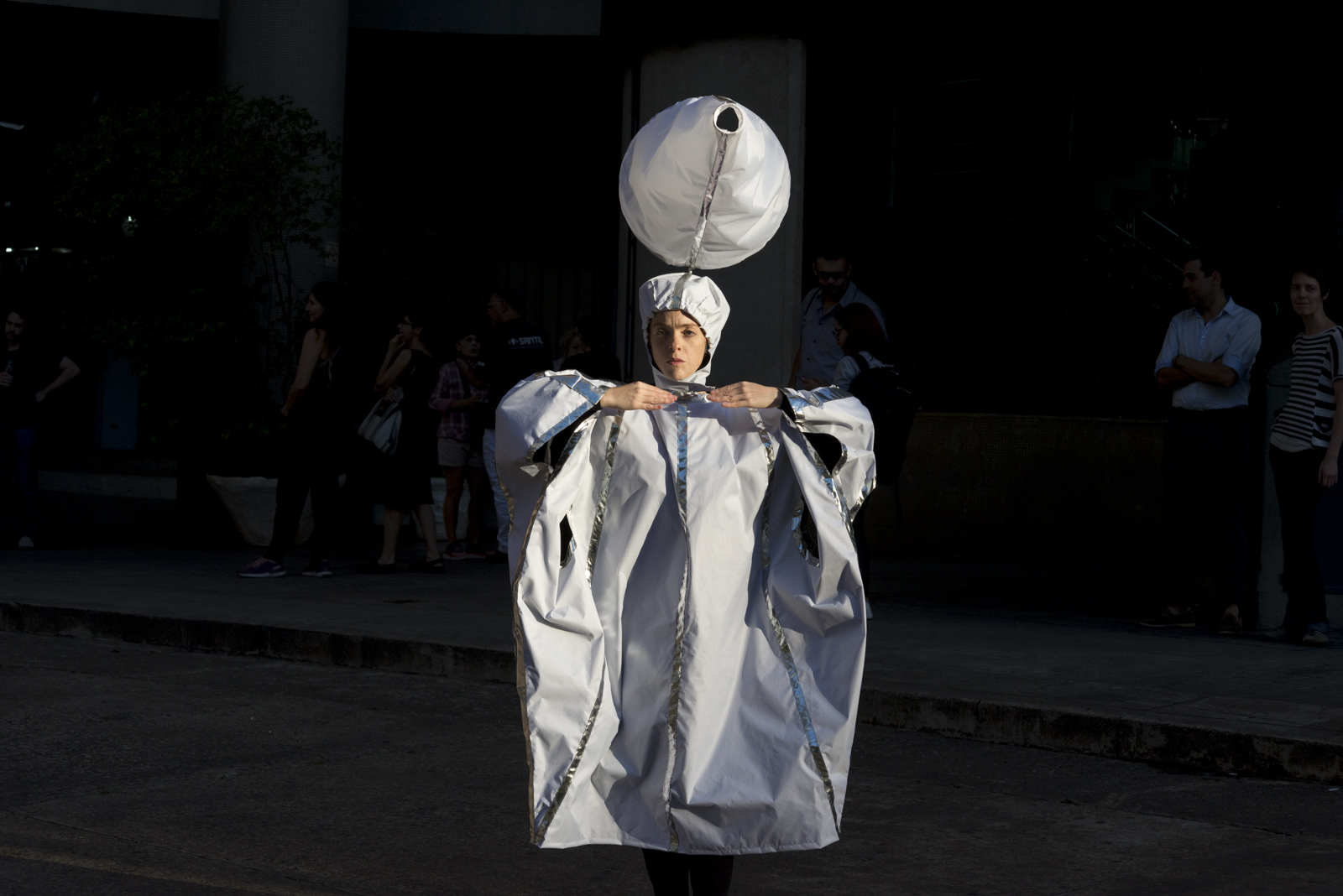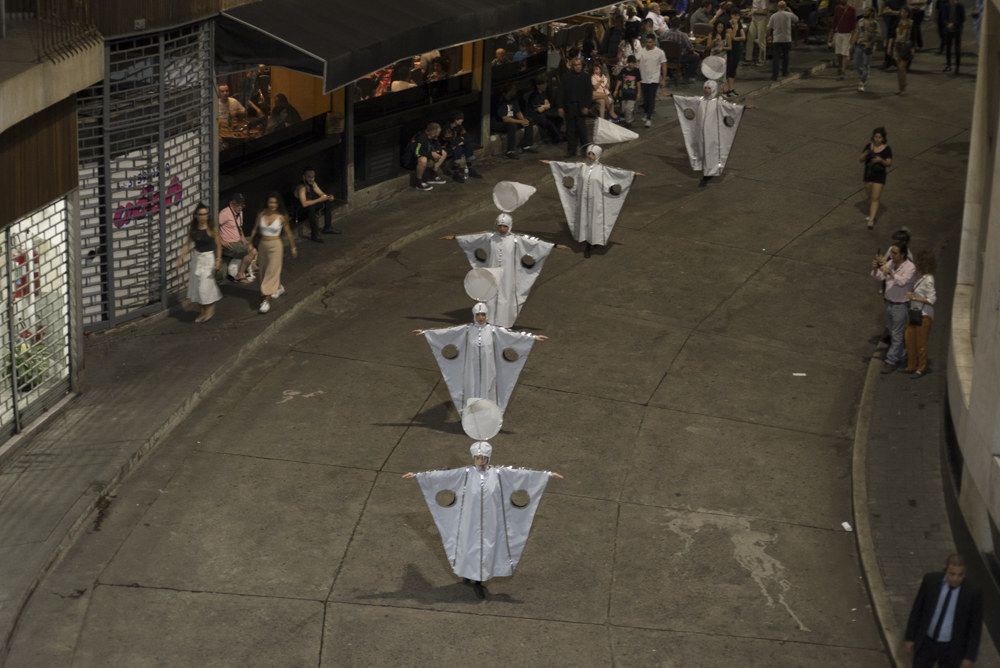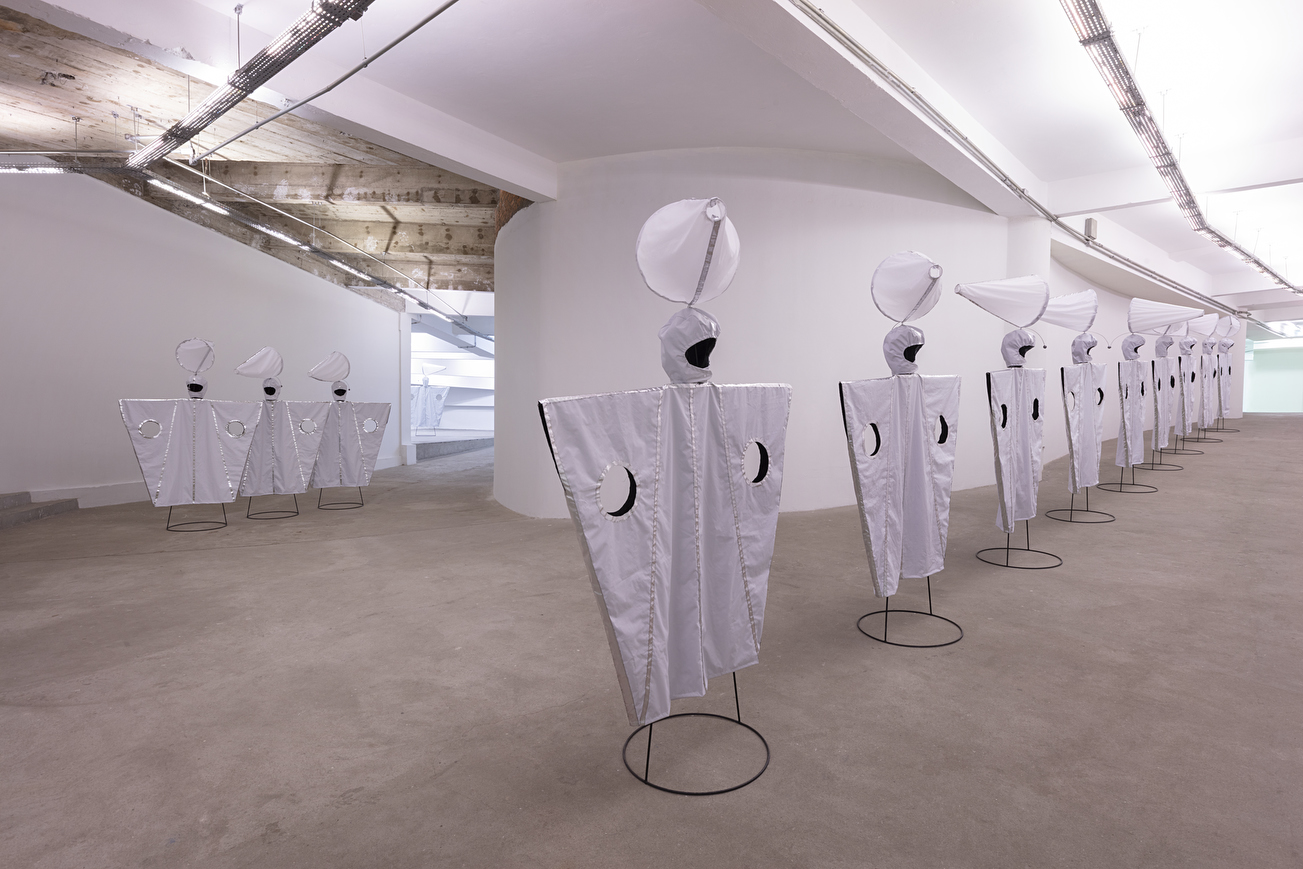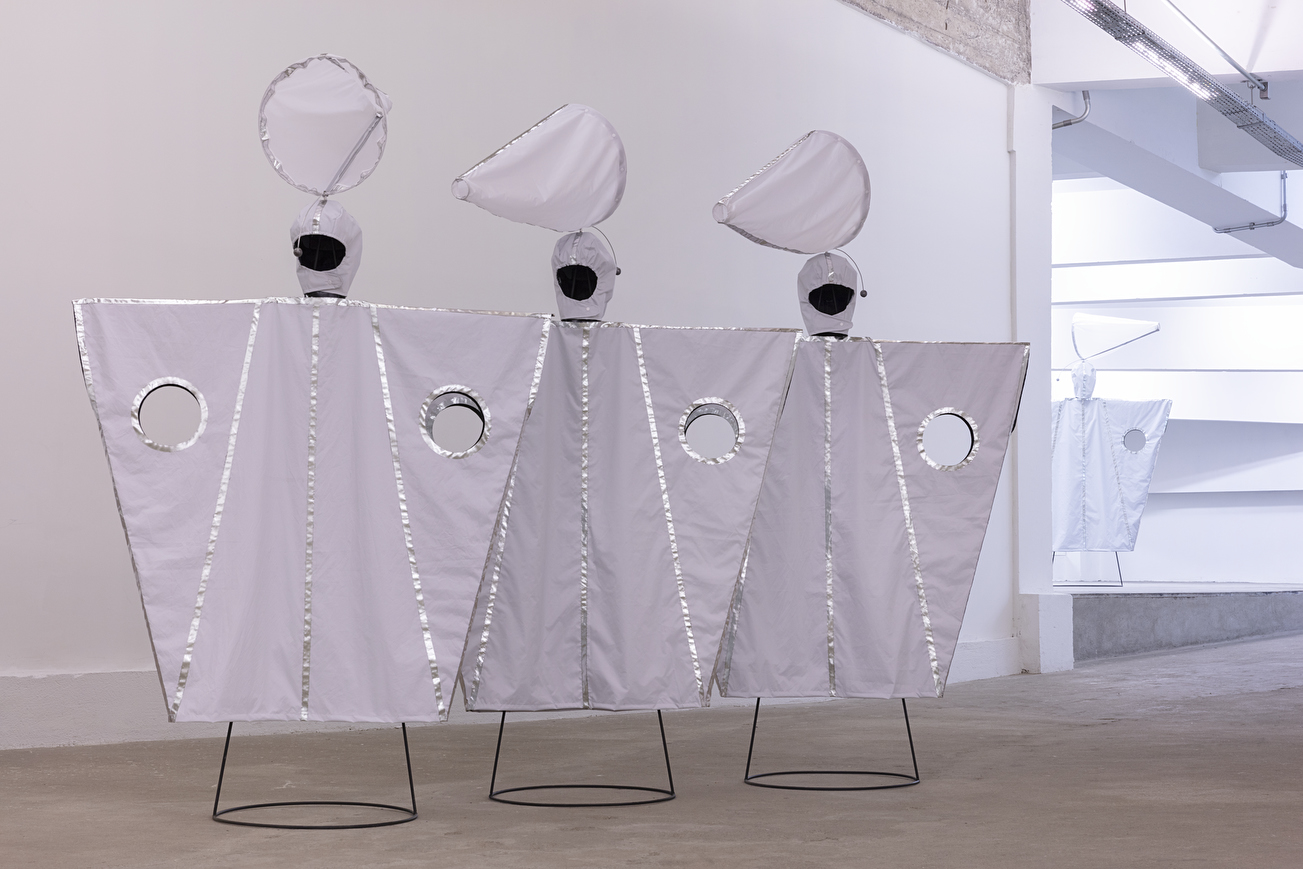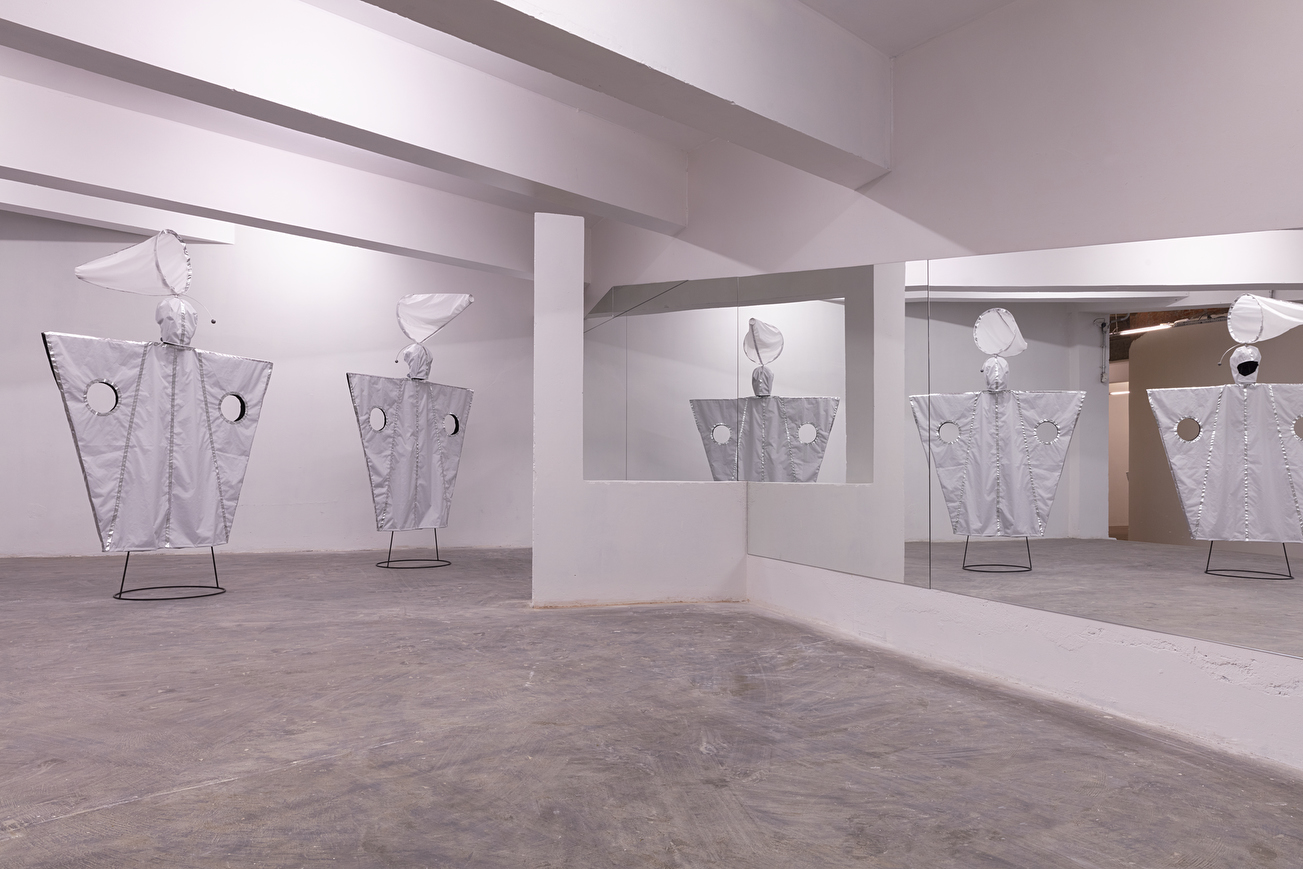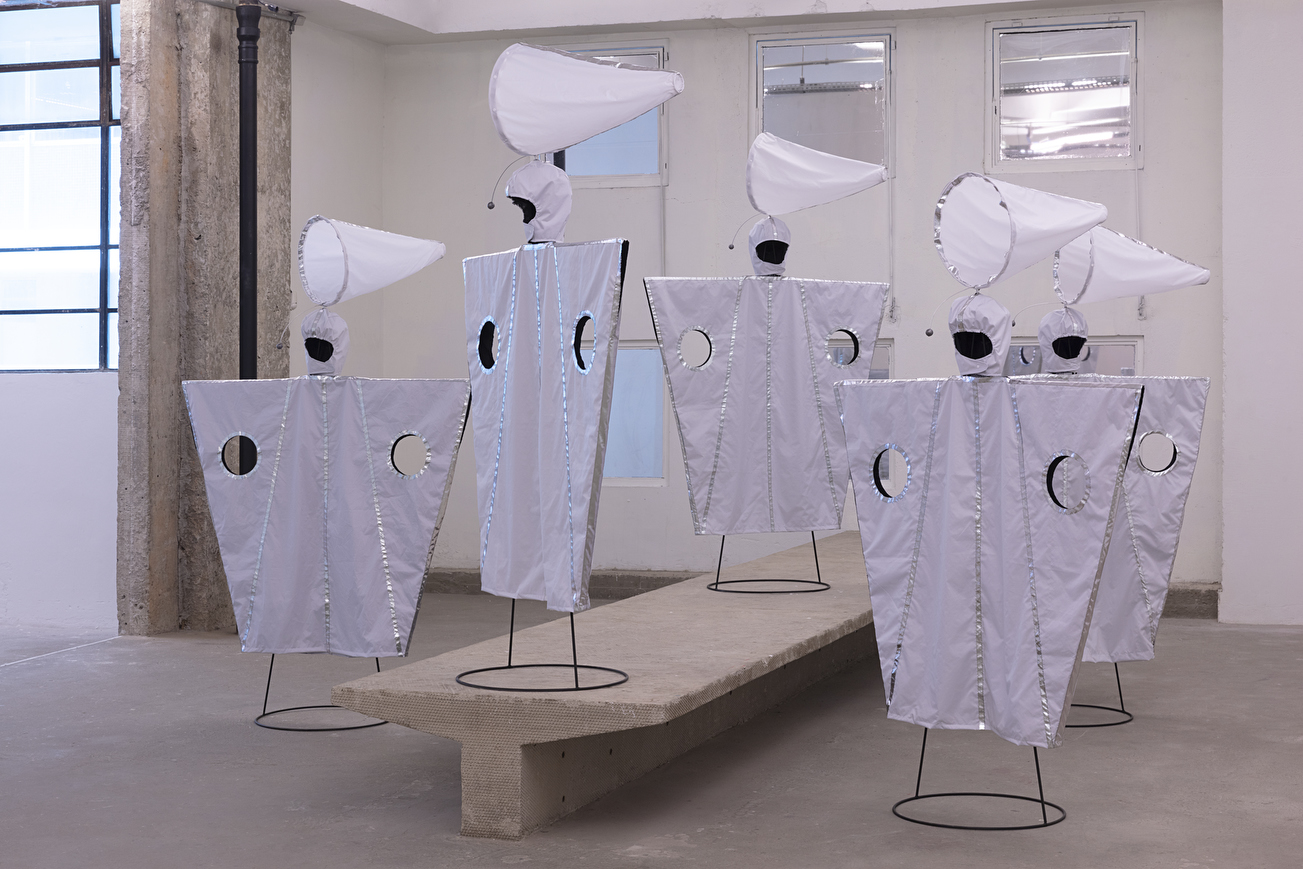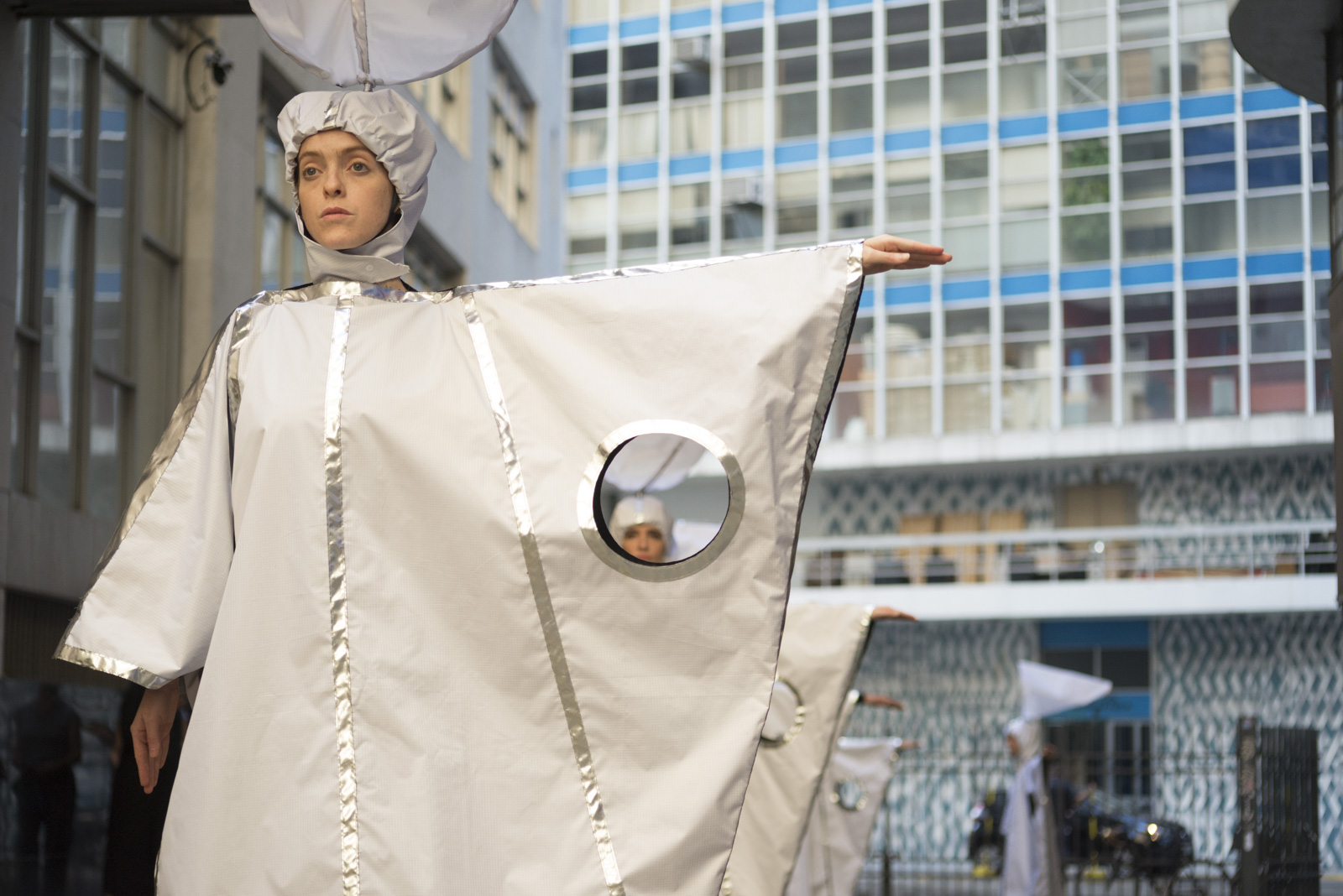
Continuing its annual exhibition program of 2019, Pivô presents Instant Weather Prediction: the first solo show by the Argentinian artist Eduardo Navarro in Brazil.
In his work Eduardo Navarro investigates possible points of convergence between art and science, dedicating special attention to the possibility of dialogue between natural forces and species. The artist frequently works with collaborators from various technical fields which help him develop special displays, to investigate the effects of natural phenomena in the human experience. This opens new possibilities of contact and interaction with the immediate surroundings. Navarro’s performances and installations often rely on dancers and volunteers to be activated. His projects range from complex choreographies, sculptures and installations to edible drawings, focusing on the sensorial in order to approximate the observer and what is observed, hence “becoming” the subject study.
Instant Weather Prediction is a project commissioned by Pivô and presented in its main exhibition space. Navarro departs from his interest in the wind movement to conceive a large installation comprised of 30 garments that resemble physical meteorological stations that will be activated by dancers throughout the exhibition. This project follows a methodology the artist has used in previous works such as In Collaboration with the Sun, 2017, and Instructions from the Sky, 2016, in which Navarro developed special apparatuses in an attempt to “sync” with the clouds and the movement of the Sun. For Instant Weather Prediction the artist created a windsock-gear that expands the connection between the body with the wind.
To develop the outfits, Navarro looked closely into the cartographic representation of air currents over the Earth and observed the potential of the functioning of wind indicators as instant choreographers, better known as windsocks. In Portuguese the windsocks translate as “birutas”, which also means a crazed person. Both the figurative poetic meaning and the utilitarian value of the object interest the artist. The windsock empties or fills with air indicating the wind direction from which the winds come from. Surprisingly, this analogical device is still crucial to the organization of air traffic worldwide.
The outfits created by the artist are made of nylon fabric – most commonly used in parachutes and umbrellas – yet, when activated by dancers, they stage a “ballet” where the wind becomes the central force that guides the movements turning into an instantaneous, invisible choreographer. To create this dance Navarro developed, together with the dancer and choreographer Zélia Monteiro, a series of movements in which they investigate the visual strength and the mechanical efficiency of the outfits when in contact with the air wind currents outside Pivô. There will be two public activations of the outfits by a group of dancers and students, scheduled for the opening and closing of the exhibition, as well as public programs in which visitors are invited to activate the work.
When not in use, the outfits occupy Pivô’s space in sleep mode, awaiting for “meteorologistdancers” to activate them. The artist requested for the windows to remain open throughout the duration of the exhibition, allowing the air currents to circulate and set the suits in motion, constantly responding to weather variations.
Instant Weather Prediction was made possible through a partnership with Inclusartiz Institute, and it is a project in which Navarro points to a form of sensorial technology that triggers connections between the body, the urban space, and nature. For years, he has been exploring ways of transforming perception to investigate new kinds of connections between the human being and his environment.
Opening: June 15th from 3 pm to 7 pm (activation throughout the opening)
Last activation: July 27th from 3 pm to 5 pm
Ending: August 03 from 1 pm to 7 pm

 Português
Português